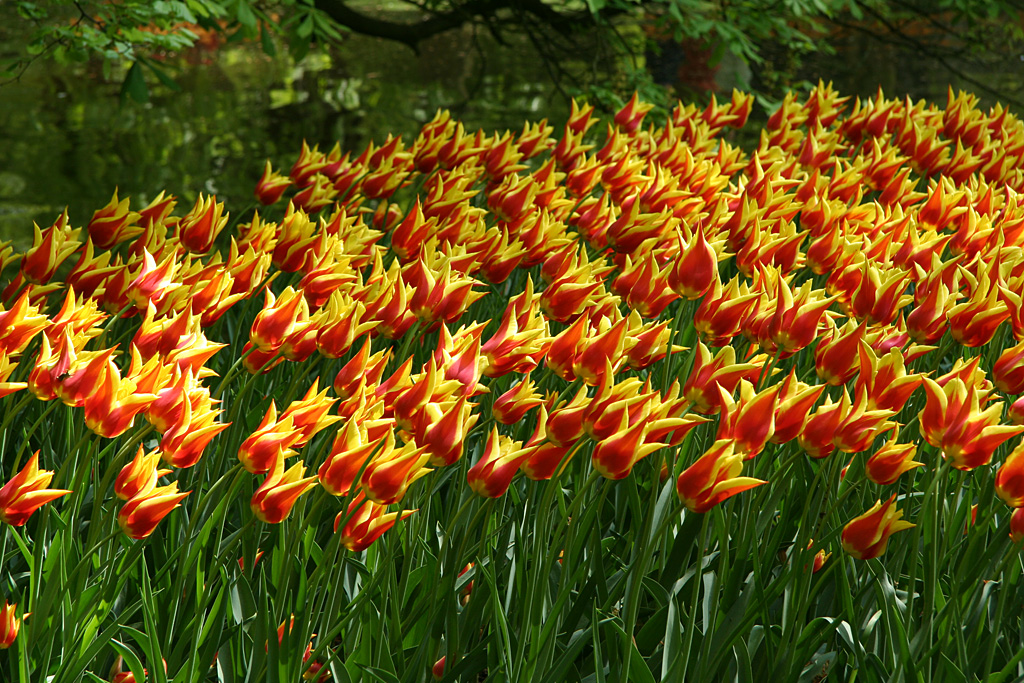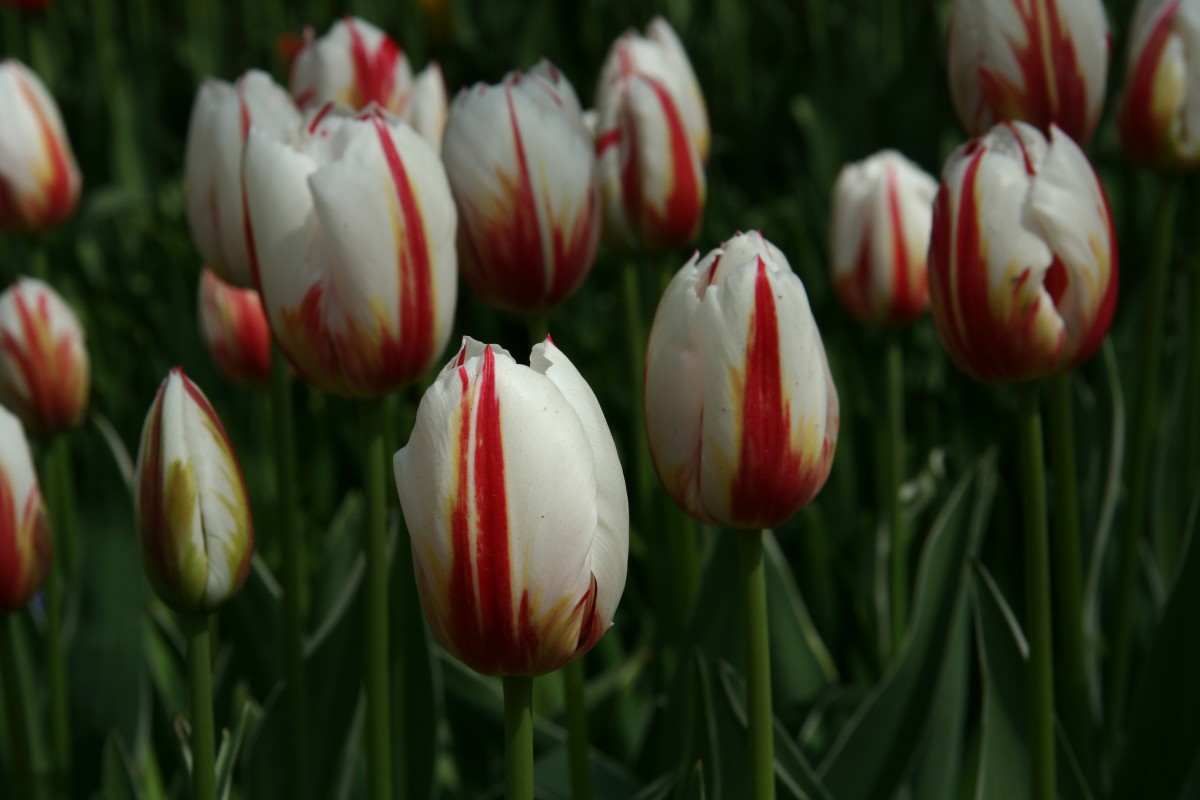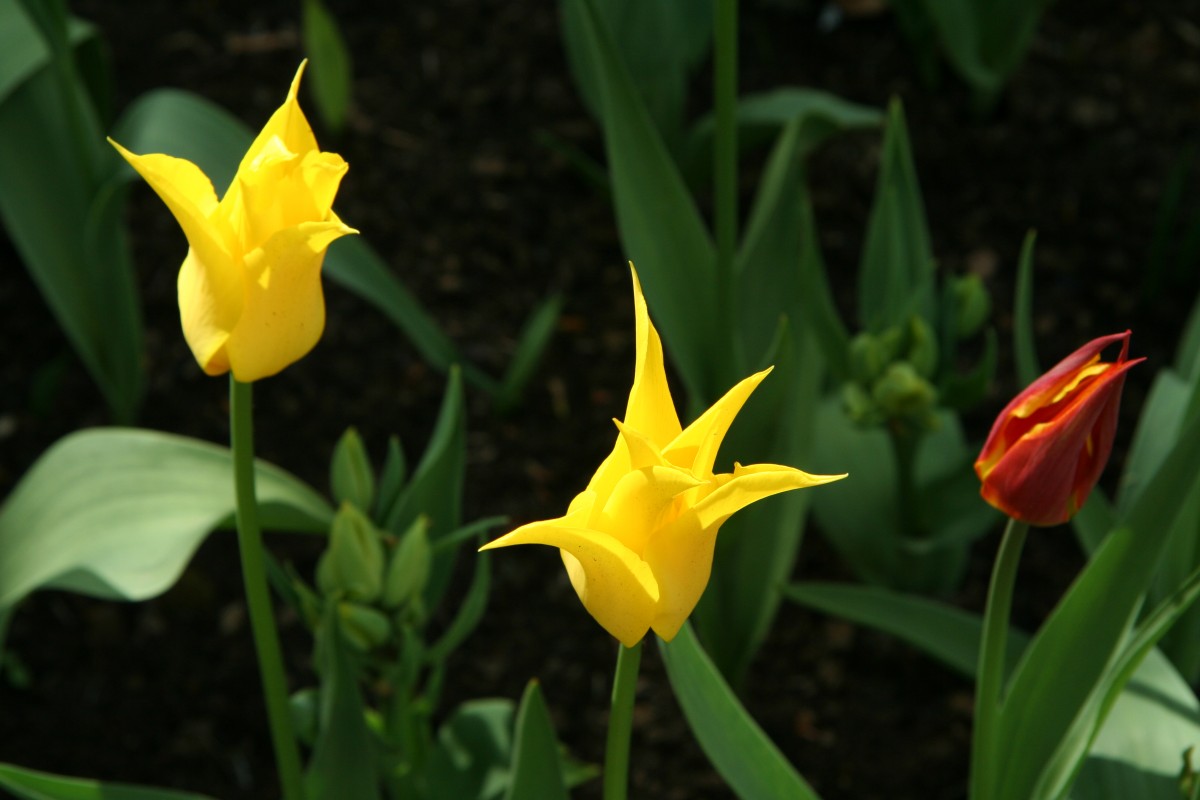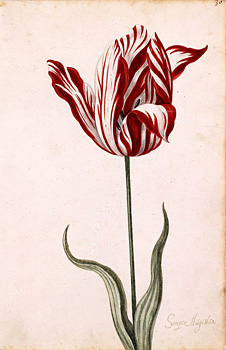Tulip Mania in Seventeenth-century Amsterdam
Tulip mania was a result of greed. In the seventeenth century tulips had become trendy in Amsterdam. Clever speculators stepped in and the commodity markets soared, but their profits were short-lived.
One tulip bulb would fetch €2000 (in today’s money). This meant that a tulip bulb was worth as much as a canal house in seventeenth-century Amsterdam. According to the latest fashion of the days, drawing rooms had to be brightened and filled with flowers.

Tulip Mania
In the sixteenth and early seventeenth centuries, it was not customary to have flowers indoors. Flowers grew in the garden and the inhabitants of the canal houses in Amsterdam looked at them from behind their windows. However, when it became trendy to have flowers indoors, all the wives of wealthy Amsterdam merchants wanted to join this hype.
In no time, their rooms were filled with colourful bouquets. Snobbery reigned supreme and no one wanted to be inferior to their neighbours or friends. Everyone agreed; tulips with fiery stripes on the petals were the most beautiful.
Seventeenth-century painters used the tulip as part of a larger painting, just as today the glossies attract attention with pictures of Gucci bags or Rolex watches. Only in the twentieth century was it discovered that the swirling stripes on the flower petals were a viral disease.
The Origin of the Tulips
Although tulips are associated with the Netherlands, they are not Dutch flowers at all. Tulips come from Central Asia and the Turks were the first to cultivate the plant. In the sixteenth century, the Hapsburg ambassador in Constantinople (Istanbul) brought some tulip bulbs to Vienna. The court botanist, Carolus Clusius, propagated them. When he was appointed head of the Botanical Garden in Leiden, Clusius discovered that the tulip bulb thrived in Dutch soil.

The Origin of the Tulips
Although tulips are associated with the Netherlands, they are not Dutch flowers at all. Tulips come from Central Asia and the Turks were the first to cultivate the plant. In the sixteenth century, the Habsburg ambassador in Constantinople (Istanbul) brought some tulip bulbs to Vienna. The court botanist, Carolus Clusius, propagated them. When he was appointed head of the Botanical Garden in Leiden, Clusius discovered that the tulip bulb thrived in Dutch soil.
Prices Rocketed
Speculators outsmarted each other. Exorbitant prices were paid for the best tulip bulbs, which were then resold without the buyer physically getting a bulb. At the height of the tulip mania, the Semper Augustus tulip fetched as much as the annual salary of an average Amsterdam resident. The Viceroy bulb was worth as much as a canal house. The painter, Jan van Goyen, is said to have paid 1900 guilders (€60.000 in today’s money) plus two paintings for ten bulbs.
Faded Dreams
Between 1636–1637, tulip mania reached its peak, and the tulip traders made fortunes. As with anything overpriced, the investors pocketed the profits. When, one day, a buyer didn’t show up and didn’t pay for his bulbs, it was the beginning of the end. The tulip bulb was no longer popular. The city buzzed with rumours. Fear ran high, panic. Within a few days the tulip bulbs were only worth a fraction of the price. The tulip mania was just a faded dream

Bankrupt
Traders went bankrupt, and speculators were left with unsold bulbs. The government considered the tulip mania a sort of gambling game and did not act. Profits evaporated. Fortunately, the Dutch have never given up their love for the tulip. To this day, the Dutch are the largest bulb suppliers in the world.
TIP from the editor of Amsterdam-Now
Visit the Amsterdam Tulip Museum if you would like to know more about tulip cultivation in the Netherlands or if you want to create your own Dutch garden. The museum shop stocks top quality Holland bulbs, export approved. Choose your favourites or have them sent home. No garden? Take your pick from the large collection of antique, tulip-patterned tiles, postcards, posters and bags all with tulip designs or buy that special book which tells the history of the tulip. More about the Tulip Museum here
Amsterdam Tulip Museum, Prinsengracht 112, Amsterdam, open daily 10.00-18.00
photos Marianne Crone

The Semper Augustus tulip (on the left) was the most expensive tulip in the 17th century. Its vivid colours were caused by a virus which weakened the plant and also the flower causing it to wilt. The Semper Augustus tulip no longer exists.
Holland’s sandy soil and mild climate provided the right conditions. When a horticulturalist discovered how to cross-breed tulips to produce different shapes and colours, the tulip became a compelling commodity. By the mid-1700s speculation in tulip futures were commonplace. Many people became rich overnight. But like the Internet bubble, the tulip bubble burst and left people with massive debts and many growers went bankrupt.



